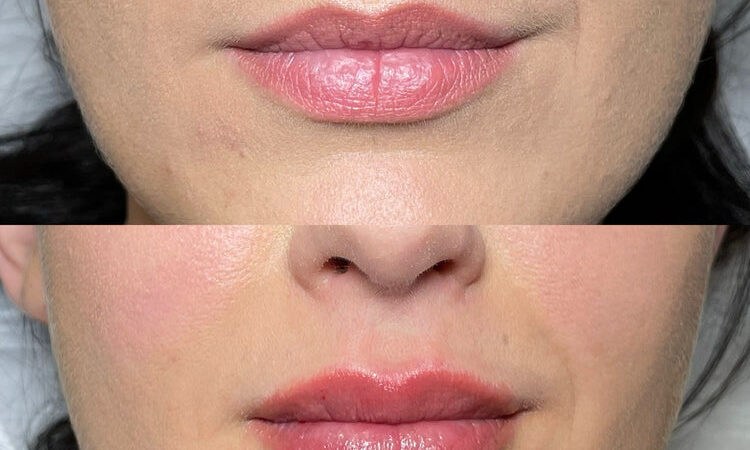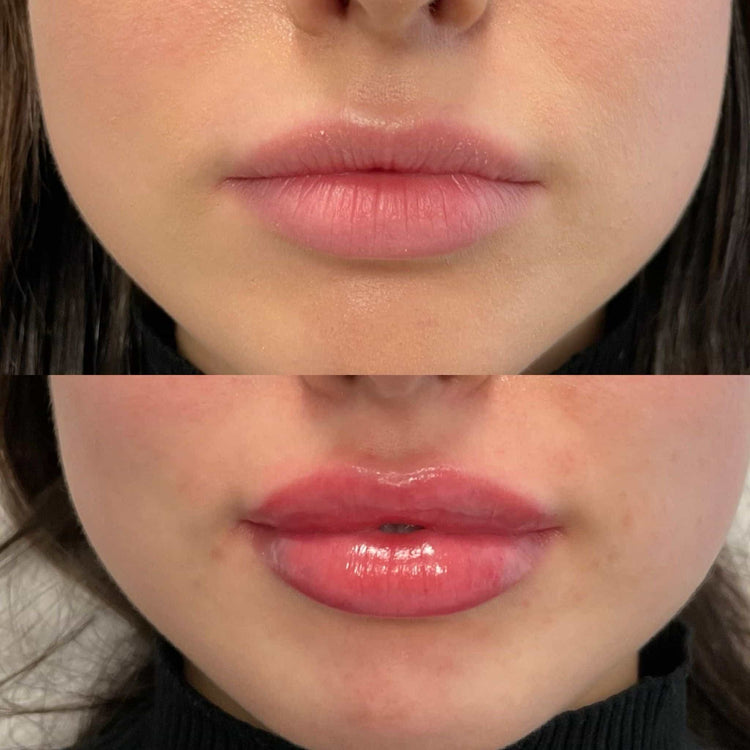Are Dermal Fillers Reversible? Understanding The Process

Types of Dermal Fillers
Dermal fillers are popular cosmetic treatments used to enhance facial contours, reduce wrinkles, and restore volume. Various types of fillers are available, each composed of different materials with varying properties and longevity. Some common types include hyaluronic acid fillers, calcium hydroxylapatite, poly-L-lactic acid (PLLA), and collagen.
Hyaluronic Acid Fillers
Hyaluronic acid fillers are one of the most popular types of dermal fillers used today. They work by attracting and retaining water molecules, which plumps up the skin and softens wrinkles. Hyaluronic acid is a naturally occurring substance in the body, making it biocompatible and generally well-tolerated. These fillers tend to be temporary, with results lasting anywhere from 6 months to 2 years depending on the product and individual factors.
Collagen Fillers
Collagen fillers are another type of dermal filler used for wrinkle reduction and facial volumization. Collagen is a protein naturally found in the skin that provides structure and elasticity. However, collagen production decreases as we age, leading to wrinkles and loss of volume.
Collagen fillers are derived from animal sources or synthesized in laboratories. They are injected into the skin to add volume and plump up wrinkles. Unlike hyaluronic acid fillers, collagen fillers tend to have a shorter lifespan, with results typically lasting for several months.
Poly-L-Lactic Acid (PLLA) Fillers
Poly-L-Lactic Acid (PLLA) fillers are synthetic dermal fillers that work differently than hyaluronic acid or collagen fillers. Instead of adding immediate volume, PLLA stimulates the body’s own collagen production. This gradual process leads to a long-lasting increase in skin thickness and fullness over several months.
PLLA fillers are often used to address deeper wrinkles, acne scars, and loss of facial volume. They can provide results that last for up to two years or longer, making them a popular choice for patients seeking longer-lasting improvements.
Calcium Hydroxylapatite Fillers
Calcium hydroxylapatite fillers are a type of dermal filler made from microscopic calcium crystals suspended in a gel. These crystals stimulate the production of collagen, leading to a gradual increase in skin thickness and volume.
Calcium hydroxylapatite fillers are known for their longevity, with results often lasting up to a year or more. They are commonly used to address wrinkles, folds, acne scars, and loss of facial volume.
Reversibility of Different Filler Types
Dermal fillers have become increasingly popular as a means to enhance facial aesthetics and rejuvenate skin. These injectable substances, available in various formulations, aim to restore volume, smooth wrinkles, and sculpt contours. Understanding the reversibility of different filler types is crucial for patients considering this cosmetic procedure.
Hyaluronic Acid Fillers
The reversibility of dermal fillers varies depending on the type of filler used. Hyaluronic acid fillers are typically reversible, meaning they can be dissolved using an enzyme called hyaluronidase. This enzyme breaks down hyaluronic acid, allowing the filler to be gradually reabsorbed by the body.
Other types of fillers, such as collagen and calcium hydroxylapatite, are generally not reversible. Once these fillers are injected, they remain in the skin for an extended period.
Poly-L-lactic acid (PLLA) fillers work differently than hyaluronic acid or collagen fillers. Instead of adding immediate volume, PLLA stimulates the body’s own collagen production. As a result, PLLA fillers are not easily reversible as they trigger a long-term process of collagen synthesis.
Collagen Fillers
The reversibility of dermal fillers varies depending on the type of filler used. Hyaluronic acid fillers are typically reversible, meaning they can be dissolved using an enzyme called hyaluronidase. This enzyme breaks down hyaluronic acid, allowing the filler to be gradually reabsorbed by the body.
- Hyaluronic Acid Fillers: Reversible
- Collagen Fillers: Not Reversible
- Calcium Hydroxylapatite Fillers: Not Reversible
- Poly-L-Lactic Acid (PLLA) Fillers: Not Easily Reversible
PLLA Fillers
Poly-L-lactic acid (PLLA) fillers are synthetic dermal fillers that work differently than hyaluronic acid or collagen fillers. Instead of adding immediate volume, PLLA stimulates the body’s own collagen production. This gradual process leads to a long-lasting increase in skin thickness and fullness over several months. As a result, PLLA fillers are not easily reversible as they trigger a long-term process of collagen synthesis.
Calcium Hydroxylapatite Fillers
Calcium hydroxylapatite fillers are a type of dermal filler made from microscopic calcium crystals suspended in a gel. These crystals stimulate the production of collagen, leading to a gradual increase in skin thickness and volume. Calcium hydroxylapatite fillers are known for their longevity, with results often lasting up to a year or more. They are commonly used to address wrinkles, folds, acne scars, and loss of facial volume.
Calcium hydroxylapatite fillers are generally not reversible.
The Process of Reversal
Understanding the reversibility of dermal fillers is crucial for anyone considering cosmetic enhancement. While some fillers can be dissolved, others provide long-lasting results that are more difficult to reverse. The type of filler used determines its potential for reversal.
Dissolution with Hyaluronidase

The process of reversing hyaluronic acid dermal fillers involves the use of an enzyme called hyaluronidase. Hyaluronidase breaks down the hyaluronic acid molecules within the filler, causing them to be gradually absorbed by the body. This enzymatic breakdown allows for a relatively quick and painless dissolution of the filler.
It is important to note that hyaluronidase injection should only be administered by a qualified medical professional experienced in dermal fillers. They will determine the appropriate dosage and administer it carefully to minimize any potential side effects.
Fat Grafting for Collagen and PLLA

Dermal fillers are popular cosmetic treatments used to enhance facial contours, reduce wrinkles, and restore volume. Various types of fillers are available, each composed of different materials with varying properties and longevity. Some common types include hyaluronic acid fillers, calcium hydroxylapatite, poly-L-lactic acid (PLLA), and collagen.
Hyaluronic acid fillers are one of the most popular types of dermal fillers used today. They work by attracting and retaining water molecules, which plumps up the skin and softens wrinkles. Hyaluronic acid is a naturally occurring substance in the body, making it biocompatible and generally well-tolerated. These fillers tend to be temporary, with results lasting anywhere from 6 months to 2 years depending on the product and individual factors.
Collagen fillers are another type of dermal filler used for wrinkle reduction and facial volumization. Collagen is a protein naturally found in the skin that provides structure and elasticity. However, collagen production decreases as we age, leading to wrinkles and loss of volume.
Collagen fillers are derived from animal sources or synthesized in laboratories. They are injected into the skin to add volume and plump up wrinkles. Unlike hyaluronic acid fillers, collagen fillers tend to have a shorter lifespan, with results typically lasting for several months.
Poly-L-Lactic Acid (PLLA) fillers are synthetic dermal fillers that work differently than hyaluronic acid or collagen fillers. Instead of adding immediate volume, PLLA stimulates the body’s own collagen production. This gradual process leads to a long-lasting increase in skin thickness and fullness over several months.
PLLA fillers are often used to address deeper wrinkles, acne scars, and loss of facial volume. They can provide results that last for up to two years or longer, making them a popular choice for patients seeking longer-lasting improvements.
Calcium hydroxylapatite fillers are a type of dermal filler made from microscopic calcium crystals suspended in a gel. These crystals stimulate the production of collagen, leading to a gradual increase in skin thickness and volume. Calcium hydroxylapatite fillers are known for their longevity, with results often lasting up to a year or more. They are commonly used to address wrinkles, folds, acne scars, and loss of facial volume.
Understanding the reversibility of dermal fillers is crucial for anyone considering cosmetic enhancement. While some fillers can be dissolved, others provide long-lasting results that are more difficult to reverse. The type of filler used determines its potential for reversal.
The process of reversing hyaluronic acid dermal fillers involves the use of an enzyme called hyaluronidase. Hyaluronidase breaks down the hyaluronic acid molecules within the filler, causing them to be gradually absorbed by the body. This enzymatic breakdown allows for a relatively quick and painless dissolution of the filler.
It is important to note that hyaluronidase injection should only be administered by a qualified medical professional experienced in dermal fillers. They will determine the appropriate dosage and administer it carefully to minimize any potential side effects.
Surgical Removal
Dermal fillers have become increasingly popular as a means to enhance facial aesthetics and rejuvenate skin. These injectable substances, available in various formulations, aim to restore volume, smooth wrinkles, and sculpt contours. Understanding the reversibility of different filler types is crucial for patients considering this cosmetic procedure.
The reversibility of dermal fillers varies depending on the type of filler used. Hyaluronic acid fillers are typically reversible, meaning they can be dissolved using an enzyme called hyaluronidase. This enzyme breaks down hyaluronic acid, allowing the filler to be gradually reabsorbed by the body.
Other types of fillers, such as collagen and calcium hydroxylapatite, are generally not reversible. Once these fillers are injected, they remain in the skin for an extended period.
Poly-L-lactic acid (PLLA) fillers work differently than hyaluronic acid or collagen fillers. Instead of adding immediate volume, PLLA stimulates the body’s own collagen production. As a result, PLLA fillers are not easily reversible as they trigger a long-term process of collagen synthesis.
The process of reversing hyaluronic acid dermal fillers involves the use of an enzyme called hyaluronidase. Hyaluronidase breaks down the hyaluronic acid molecules within the filler, causing them to be gradually absorbed by the body. This enzymatic breakdown allows for a relatively quick and painless dissolution of the filler.
It is important to note that hyaluronidase injection should only be administered by a qualified medical professional experienced in dermal fillers. They will determine the appropriate dosage and administer it carefully to minimize any potential side effects.
Factors Affecting Reversibility
The reversibility of dermal fillers is a crucial factor for individuals considering cosmetic enhancement. Various factors influence the reversibility of these injectables, including the type of filler used, the depth of injection, and individual patient characteristics. Understanding these factors is essential for making informed decisions about this cosmetic procedure.
Filler Type
The reversibility of dermal fillers depends largely on the type of filler material used. Hyaluronic acid fillers are generally considered reversible because they can be broken down by an enzyme called hyaluronidase. This allows the filler to be gradually reabsorbed by the body, effectively reversing its effects.
Other types of fillers, such as collagen, calcium hydroxylapatite, and poly-L-lactic acid (PLLA), are typically not reversible. These materials either persist in the skin for extended periods or trigger long-term processes within the body that cannot be easily reversed.
Amount Injected
The reversibility of dermal fillers is influenced by the type of filler used. Hyaluronic acid fillers are the most reversible, as they can be dissolved with an enzyme called hyaluronidase. Collagen, calcium hydroxylapatite, and poly-L-lactic acid (PLLA) fillers are generally not reversible.
The amount injected also plays a role in reversibility. Larger volumes of filler may take longer to dissolve or be more difficult to reverse completely.
Individual factors such as metabolism, skin type, and the skill of the injector can also affect the reversibility of dermal fillers.
Location of Injection
The reversibility of dermal fillers is influenced by several factors:
- Type of Filler: The most crucial factor is the specific type of filler used. Hyaluronic acid fillers are generally reversible, meaning they can be dissolved using an enzyme called hyaluronidase. Other types, such as collagen, calcium hydroxylapatite, and poly-L-lactic acid (PLLA), are typically not reversible.
- Location of Injection: The location where the filler is injected can also influence its reversibility. Fillers injected deeper into the tissues may be more difficult to reverse completely compared to those injected superficially.
- Volume Injected:** Larger volumes of filler often take longer to dissolve and may be more challenging to reverse entirely.
- Individual Factors: Each person’s metabolism, skin type, and overall health can influence how the body processes and absorbs fillers. Individual variations can affect the rate of breakdown and reversibility.
Individual Body Response
The reversibility of dermal fillers is a crucial factor for individuals considering cosmetic enhancement. Various factors influence the reversibility of these injectables, including the type of filler used, the depth of injection, and individual patient characteristics. Understanding these factors is essential for making informed decisions about this cosmetic procedure.
The reversibility of dermal fillers depends largely on the type of filler material used. Hyaluronic acid fillers are generally considered reversible because they can be broken down by an enzyme called hyaluronidase. This allows the filler to be gradually reabsorbed by the body, effectively reversing its effects.
Other types of fillers, such as collagen, calcium hydroxylapatite, and poly-L-lactic acid (PLLA), are typically not reversible. These materials either persist in the skin for extended periods or trigger long-term processes within the body that cannot be easily reversed.
The reversibility of dermal fillers is influenced by several factors:
- Type of Filler: The most crucial factor is the specific type of filler used. Hyaluronic acid fillers are generally reversible, meaning they can be dissolved using an enzyme called hyaluronidase. Other types, such as collagen, calcium hydroxylapatite, and poly-L-lactic acid (PLLA), are typically not reversible.
- Location of Injection: The location where the filler is injected can also influence its reversibility. Fillers injected deeper into the tissues may be more difficult to reverse completely compared to those injected superficially.
- Volume Injected:** Larger volumes of filler often take longer to dissolve and may be more challenging to reverse entirely.
- Individual Factors: Each person’s metabolism, skin type, and overall health can influence how the body processes and absorbs fillers. Individual variations can affect the rate of breakdown and reversibility.
Risks and Considerations
The decision to get dermal fillers should be made with a thorough understanding of their risks and considerations.
One primary risk is the potential for adverse reactions. These can range from mild, such as redness, swelling, or bruising at the injection site, to more serious complications like allergic reactions, infection, or even tissue damage. It’s crucial to have a consultation with a qualified medical professional who can assess your individual health history and determine if dermal fillers are right for you.
Another consideration is the temporary nature of some fillers. Hyaluronic acid fillers, while reversible, do eventually break down and require repeat treatments to maintain results. This means ongoing costs and commitment. Long-lasting fillers like calcium hydroxylapatite or PLLA may not be fully reversible and provide permanent changes.
Additionally, the placement and amount of filler injected can significantly impact the final outcome. Incorrect placement can lead to asymmetry, lumps, or an unnatural appearance. It is essential to choose a skilled and experienced injector who understands facial anatomy and proportions.
Finally, it’s important to be realistic about expectations. Dermal fillers can enhance features and minimize imperfections but cannot completely transform your appearance. Maintaining a healthy lifestyle, including protecting your skin from sun damage, will help prolong the effects of any filler treatment.
Discover the power of dermal fillers for facial symmetry at It’s Me & You Clinic
- How To Help Swelling From Lip Filler - October 1, 2025
- How Gaslighting Damages Relationships And How To Fight Back - September 27, 2025
- Gummy Smile Treatment – Gum Contouring Near Coldharbour, Surrey - September 26, 2025
